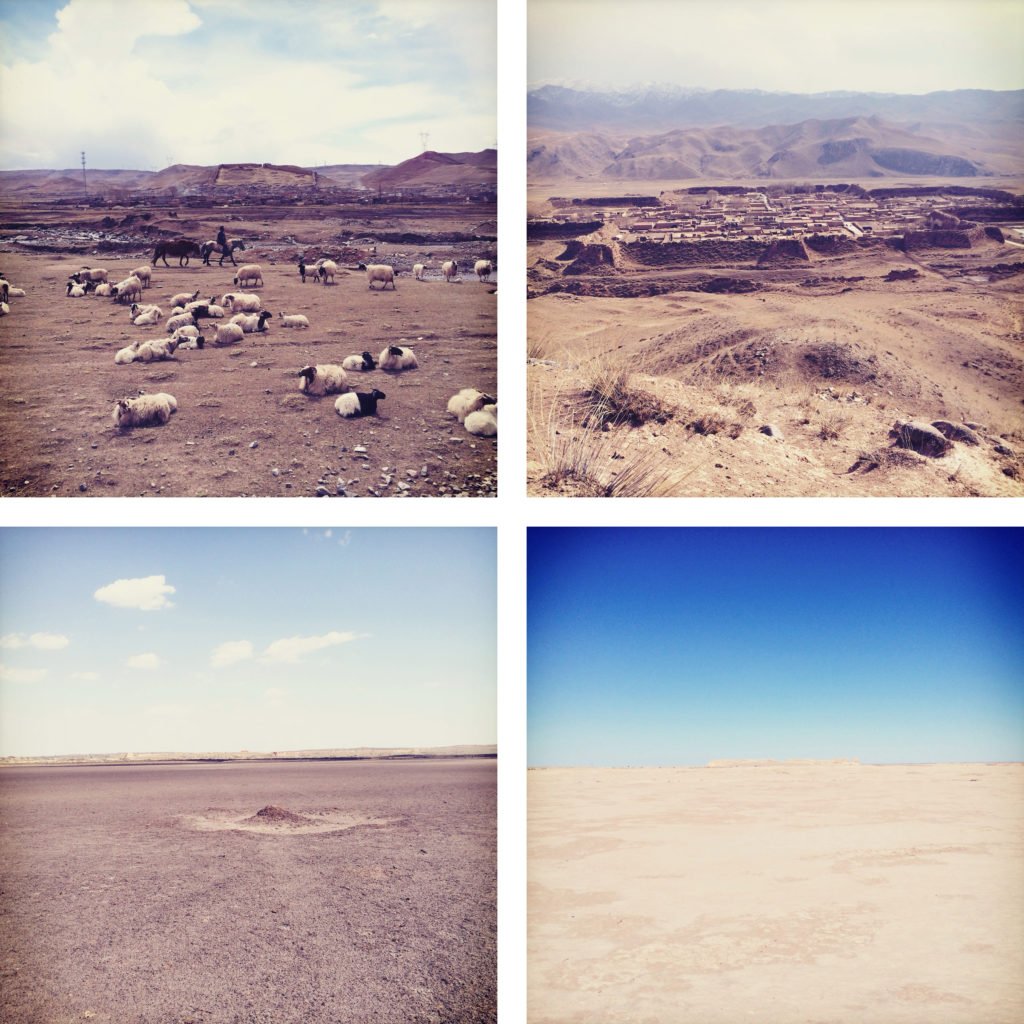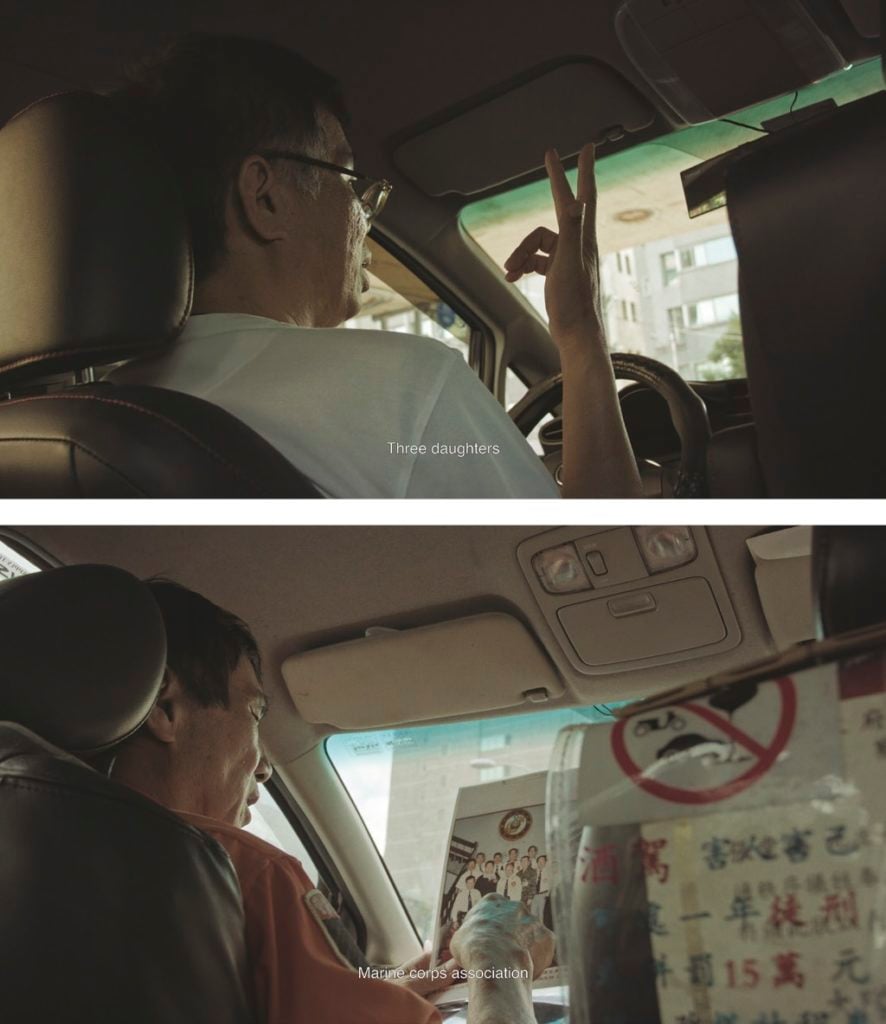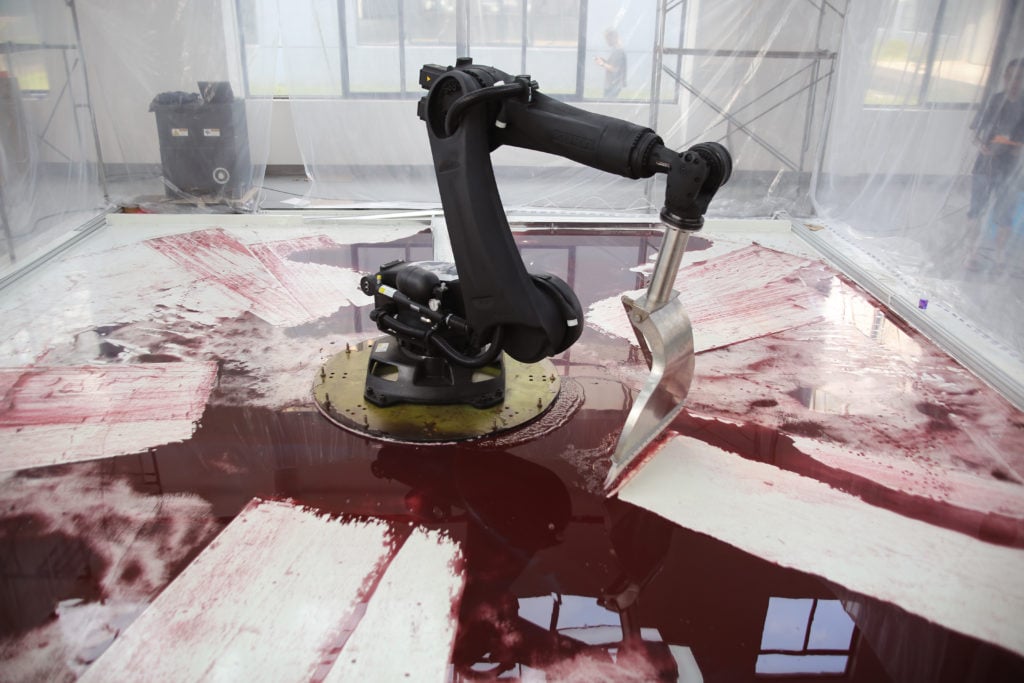On View
Eight Chinese Artists Rewrite History in ‘Tales of Our Time’
A key generation offers a new perspective.

A key generation offers a new perspective.

Caroline Elbaor

![]()
“How do you understand the relationship between storytelling, fiction, imagination, and history-writing?” Guggenheim curator Xiaoyu Weng asked artnet News in a phone interview. “[I’m] interested in how narratives play a role in writing history.”
Weng’s first exhibition at the Guggenheim, “Tales of Our Time,” opens Friday, November 4, and features eight newly-commissioned works of Chinese and Taiwanese artists and collectives: Chia-En Jao, Kan Xuan, Sun Xun, Sun Yuan & Peng Yu, Tsang Kin-Wah, Yangjiang Group, and Zhou Tao. This disparate group uses their birthplaces as springboards for a greater exploration of the meaning of “place,” especially in relation to history.
The exhibition takes its name from the 1936 book Gushi xin bian (Old Tales Retold) by Lu Xun, a leading influence in modern Chinese literature. The text is a collection of fictional stories that Lu based on ancient Chinese fables and legends. Thus, as its title suggests, Lu is retelling old tales, using their new iterations to comment on the problems of his era.
“Tales of Our Time” is an updated version of Lu’s book in the form of an exhibition, with the artists exploring both personal and national histories in an attempt to rewrite or alter them—and in doing so, reflect the state of present-day China.

Chia-En Jao. Taxi (2016). Solomon R. Guggenheim Museum, New York, The Robert H. N. Ho Family Foundation Collection, Acquisition in process © Chia-En Jao
For Taxi (2016), a video installation by Chia-En Jao, the artist recorded conversations between himself and various taxi drivers in Taipei, each of whom he had asked to take him to a site of historical controversy within the city. (Examples include Chang Hwa Bank, the Presidential Office Building, the Grand Hotel, or the National Taiwan Museum.) These historically-loaded locations spark conversations that touch upon both the artist and driver’s individual stories; some relate to the destination, other exchanges drift to present-day issues.
In preparation for her multimedia installation Kū Lüè Er (2016), artist Kan Xuan traveled to far-reaches across China for five months, photographing and researching the remains of 110 ancient cities. She then took her travel images and, after editing their color, arranged them to play on a loop in stop-motion across 11 flat-screen monitors. The installation also includes a projection of hand-drawn maps that the artist sketched from memory which detail the sites she explored in her travels.
As such, Kan’s maps emphasize the role of personal influences in recounting history, and she essentially rewrites the locations she encountered by tracing them from memory. Through Kū Lüè Er, the artist addresses China’s long tradition of dynasties and the country’s ever-shifting territories in an intimate nature, and by manipulating the artifacts from her journey, she points to the inconsistencies inherent in storytelling.
A controversial young art duo included in the show breaks new ground with Can’t Help Myself (2016), a gigantic robot equipped with a single arm upon whose end a shovel-like object is attached. It is the brainchild of Beijing-based artists Sun Yuan and Peng Yu. Described by the press release as “guard” of sorts, the robot’s duty is to contain a pool of dark liquid resembling blood as it starts to seep away. The more the substance oozes, the more frantic the robot grows, shoveling the liquid in a move that leaves behind smears and traces of red.
Can’t Help Myself, according the curator, “is itself a tale, a story, that we can say comments on our contemporary culture.”

Sun Yuan & Peng Yu. Can’t Help Myself (2016). Solomon R. Guggenheim Museum, New York, The Robert H. N. Ho Family Foundation Collection, Acquisition in process © Sun Yuan & Pen Yu. Courtesy the artists.
All the artists included in the exhibition were born between 1970-80, thus suggesting that the works on display in “Tales of Our Time” offer a particular lens through which China is presented. “This specific generation of artists have a different relationship to, and understanding of, interaction with history than previous generations,” Weng explained, stressing that their age affords them a more globalized outlook than their older counterparts.
“All of these artists have experienced living, working, and exhibiting outside of China, which gives them wider source materials in terms of China’s position with the world,” she continued. “Therefore, they can look at contemporary issues of culture in a different context.”
“Tales of Our Time” is on view at the Guggenheim, 1071 5th Avenue, November 4, 2016–March 10, 2017.